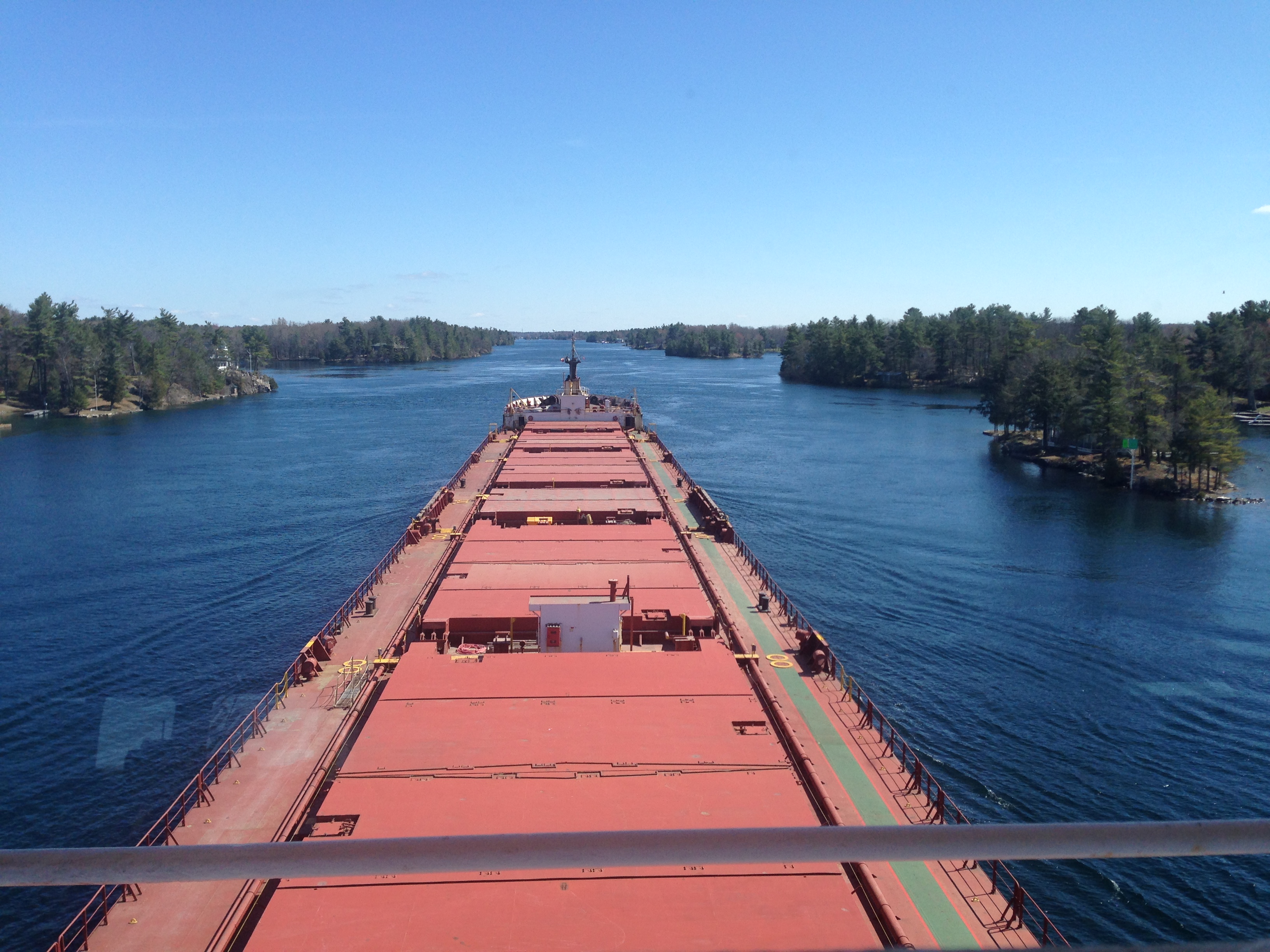-
Posts
3,251 -
Joined
-
Last visited
Content Type
Profiles
Forums
Gallery
Events
Everything posted by realworkingsailor
-
Canadian Pacific experimented with bay window vans in the late 19th century. They didn’t work so well in the winter, as the snow would accumulate and block the windows. I found a couple of photos here (3rd and 4th from the top): http://www.trainweb.org/oldtimetrains/photos/cpr_rolling/five.htm You can see the construction is almost identical. Andy
-
Looks fantastic! Great to see you back at the bench. I wonder if this tool might help make things easier on your wrists: https://www.micromark.com/Nibbling-Cutter A model railway friend of mine (who was amazing at building styrene structures from scratch) has a set, and they sure speed up the process. Andy
-
Sorry, I don’t have Facebook. Looking at photos available online, there are four cargo cranes surrounding the decked over well deck, so the hatches must still be there: Andy
-
Seems as likely as not, they would have simply extended the hatch coamings up through, unless they had no intention of using the after hold (which seems weird to me). Andy
-
If you don’t mind my interjecting, it looks like in the diagram EG posted, pieces 54 a and b have switched labels with 54 c and d (as shown in Chris’ photo). 54c and d sit inside the wing cutout and a and b glued to the outside to provide support for the protruding part of the cowling. I suspect the printed side of 54c and d faces the inside of the radiator cowling. If that makes any sense. Andy
-
Sanding can’t hurt. If you have a bit of scrap material, apply a coat or two of gloss and see what the results are (with and without sanding). Even better, if you have any leftover decals from another project, you can see how they’ll work (and get familiar with the micro sol/set). I find it’s always better to try a new technique with scraps and leftovers, rather than risking everything on a prized project. Andy
-
A decal needs a glossy surface in order to adhere properly, regardless of the underlying texture or material. Testors Glosscote works well, but any clear gloss finish will work. Otherwise, follow the instructions on the bottles. If you’ve never used micro sol/set: I typically will apply a small puddle of micro set (blue bottle) to the area on the model to allow the decal to float off the backing paper. This will help prevent air bubbles. Soak up any excess with a tissue, position the decal and gently dab with a cotton swab or hobby sponge. Allow to dry. When you apply the micro sol (red bottle), the decal can wrinkle. Alarmingly! This is normal. Do not touch the decal! The glossy surface will allow the decal to settle back down and conform to any contours (like the seams between planks). If there’s any air bubbles or silvering, when dry, prick the decal with the tip of your hobby knife or a pin and apply more micro sol. Repeat the process until all bubbles are removed. Apply one more gloss coat to seal the decal, this should make all the decal edges disappear, followed by whatever other finishes you desire. Andy
-

WWII Sunken German Warships Exposed by Drought
realworkingsailor replied to mtaylor's topic in Nautical/Naval History
The problem is the possibility of UXO remaining on board. A risky and pricey salvage. Andy -
It sure opens up a lot of options for those who don’t have a full airbrush setup! Wish I’d known about this a couple of years ago, before spending a fortune getting some Scalecoat paint rattle cans shipped up from the US to Canada for my railway car project(s). Not many online retailers (or postal services) will ship rattle cans locally or internationally. I’ve only seen UPS that will accept a shipment like that (enough said right there, lesson learned, never again!). Andy
-
Out of simple curiosity, is there another way to notify the MSW membership of an outage outside of Facebook? I’m sure there are more than a few members (myself included) that want nothing to do with that site. Can another method be setup? (“Sign up here to receive email notifications”?). Rather than pestering the hard working admins with countless messages asking the same question. Andy
-
Looks good, but ya need some dunnage! (And lashings!) That load of pipes looks like it’s ready to cut loose in the hold and smash through your fine handiwork! If you really want to go all out: https://www.walthers.com/products/accessories/super-detailing-parts/rolling-stock/freight/load There’s a lot of railway car specific stuff (bulk loads and the like), but if you dig through, there are some other interesting items to fill your holds with. (If you use their dealer locator, Walthers has many locations in the UK, there should be someone near where you live). Andy
- 201 replies
-
- SD 14
- Marcle Models
-
(and 1 more)
Tagged with:
-
An unfinished past build can still come in quite handy! The benefits of keeping (hiding?) the leftovers! Your progress looks great! Andy
- 201 replies
-
- SD 14
- Marcle Models
-
(and 1 more)
Tagged with:
-
Bored? Nonsense! It’s just as interesting to see your build as it is to see those full frame wooden model thingys that others are building elsewhere around here. Besides, for me, there’s also a strong sense of familiarity, since I’d spent nearly twenty years of my life mucking around in very similar thingys. Keep up the great work! Andy
- 201 replies
-
- SD 14
- Marcle Models
-
(and 1 more)
Tagged with:
-
I should have been more clear, I meant the engine kit. Andy
- 201 replies
-
- SD 14
- Marcle Models
-
(and 1 more)
Tagged with:
-
What are the finished dimensions of the kit you have? It looks pretty good. The big slow speed marine diesels could be upwards of three stories high, so it might work for you. You could always scan it and scale it down on your computer to the size you want. Looks like there are a few Walthers distributors in the UK: https://www.walthers.com/storelocator Andy
- 201 replies
-
- SD 14
- Marcle Models
-
(and 1 more)
Tagged with:
-
Haha! Easy big guy! Found this intriguing offering: http://www.dhsdiecast.com/mobile/Marine-Engine-Load/productinfo/IMC33-0182/ It’s in 1:50 scale. Otherwise, Norscot offers a bunch of CAT engine models at larger scales (1:35, 1:12) that may also work as a main engine, with a little tweaking and a repaint. Not the cheapest, I’m afraid, but maybe workable. Andy
- 201 replies
-
- SD 14
- Marcle Models
-
(and 1 more)
Tagged with:
-
Looking nice! Will you be detailing the engine room? I had a couple of thoughts thought to help you get started: https://www.walthers.com/emd-567-prime-mover-kit https://www.walthers.com/refinery-piping-kit-509d60 https://www.walthers.com/piping-kit The first is a 1:87 styrene kit for an engine and generator (you’d need three), and the other two are a collection of pipe works and other fittings (valves, unions etc) that you can assemble as needed. If you feel like diving down that particular rabbit hole 😁 Andy Edit: Found this too: https://www.walthers.com/tanker-truck-loading-rack-kit-7-x-3-1-2-x-3-3-16-quot-17-8-x-8-9-x-8-1cm It has a bunch of pumps and other useful bits.
- 201 replies
-
- SD 14
- Marcle Models
-
(and 1 more)
Tagged with:
-
Nice idea to show some cargo too! There’s a trick model railroaders use for bulk loads where they start with a block of insulation foam (the rigid pink stuff). The block is then cut to the size of the opening and sculpted to resemble the shape of a heap of cargo. After painting the appropriate colour, a layer of “cargo” (iron ore, coal, etc) is then glued onto the “heap”, and then sealed (dullcote or whatever). Saves weight and “cargo” materials. I wonder if perhaps cornmeal might work better than sand to represent grain. The colour would be perfect for grain. As long as it’s well sealed it shouldn’t cause any problems. Andy
-
I wouldn’t worry about the wavy lines. As you said, things will straighten out as you build. It looks great so far! It’s a shame the kit isn’t offered in thicker card stock or even styrene sheet, if only to help combat the wavy paranoia. Andy
- 201 replies
-
- SD 14
- Marcle Models
-
(and 1 more)
Tagged with:
About us
Modelshipworld - Advancing Ship Modeling through Research
SSL Secured
Your security is important for us so this Website is SSL-Secured
NRG Mailing Address
Nautical Research Guild
237 South Lincoln Street
Westmont IL, 60559-1917
Model Ship World ® and the MSW logo are Registered Trademarks, and belong to the Nautical Research Guild (United States Patent and Trademark Office: No. 6,929,264 & No. 6,929,274, registered Dec. 20, 2022)
Helpful Links
About the NRG
If you enjoy building ship models that are historically accurate as well as beautiful, then The Nautical Research Guild (NRG) is just right for you.
The Guild is a non-profit educational organization whose mission is to “Advance Ship Modeling Through Research”. We provide support to our members in their efforts to raise the quality of their model ships.
The Nautical Research Guild has published our world-renowned quarterly magazine, The Nautical Research Journal, since 1955. The pages of the Journal are full of articles by accomplished ship modelers who show you how they create those exquisite details on their models, and by maritime historians who show you the correct details to build. The Journal is available in both print and digital editions. Go to the NRG web site (www.thenrg.org) to download a complimentary digital copy of the Journal. The NRG also publishes plan sets, books and compilations of back issues of the Journal and the former Ships in Scale and Model Ship Builder magazines.




